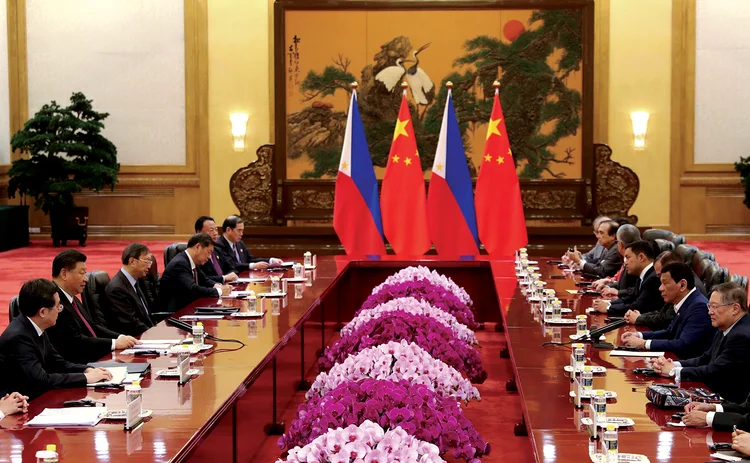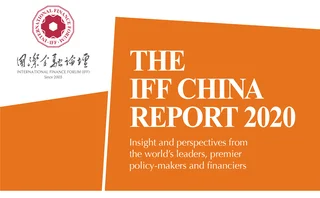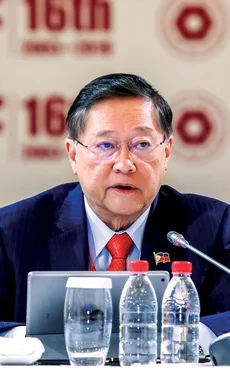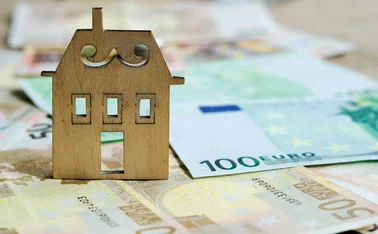
A budding partnership


In the face of a broad slowdown of the global economy, the countries comprising the Association of Southeast Asian Nations (ASEAN) and China continue to show resilience and dynamism.
These economies have fostered strong domestic markets. They have dramatically expanded their trade links and built infrastructure for more efficient payments and settlements across borders both to sustain their domestic markets and make cross-border trade more efficient. Currently, these countries are in the advanced stages of negotiating the Regional Comprehensive Economic Partnership (RCEP), which will be a game-changer for all of those economies.

However, the rapid achievement of global prosperity is threatened by the rise of protectionism. This is expressed in policies that inhibit the free movement of goods across borders, including the imposition of tariffs to achieve political ends. New hindrances to trade have resulted in an economic slowdown – consumers are forced to pay more for the goods they need, and supply chains are disrupted.
Fortunately, in Southeast Asia, consensus prevails that free trade and more efficient movement of capital is the way forward. While protectionism plagues other parts of the world, the economies of Southeast Asia have invested in the free flow of goods, capital and services. This is a major reason why the economies of this region continue to lead the way in growth.
We appreciate China’s support in building institutions for open trade and investments in the ASEAN region. The ASEAN–China Free Trade Area was the first of the free-trade agreements signed by ASEAN with its major trading partners, and its success continues to be celebrated. For 10 consecutive years, China has been ASEAN’s biggest trading partner, with total trade growing at an average of 10% a year since 2009. In 2018, ASEAN’s total trade with China reached US$483.14 billion – 10% higher than in 2017.
Under the leadership of President Rodrigo Duterte, the Philippines has adopted a more forward-looking policy towards China. The country understands the great synergy that will be generated by a closer partnership between the two countries – the opportunities that unite them are far greater than their differences.
With the warming of relations between the two countries, China has become the Philippines’ biggest trading partner and its largest tourism market. Since 2016, the Philippines’ total trade with China increased at an average of 15% annually. In 2018, total trade with China reached $52 billion – 15% higher than in 2017. Chinese tourist arrivals in the Philippines, meanwhile, have grown at an average of 27% per year since President Duterte assumed office in 2016. The number of Chinese tourist arrivals reached 1.25 million in 2018 – 23% higher than in 2017 – and reached 1.63 million by the end of 2019.
The Philippines also enjoyed the best terms in its Panda bonds floated on the Chinese market in 2018. The three-year Panda bonds worth CNY2.5 billion were priced at 3.58% and received a very tight spread of 32 basis points over the benchmark. China Lianhe Credit Rating rated the bonds as triple A – its highest rating.
The Philippines also fully supports China’s Belt and Road Initiative (BRI), appreciating its vast economic potential for all nations of the region and beyond. Improved infrastructure will enhance trade among regional economies, enhanced trade will encourage more efficient investment flows, and improved connectivity will improve the inclusiveness of our growth patterns. We have everything to gain from this.
Soft loans, hard results
The Philippines has a BRI of its own – its economic strategy centres on a massive infrastructure modernisation programme to provide the logistical backbone for a dynamic economy. Known as ‘Build, Build, Build’, the programme involves 100 highly strategic infrastructure projects, as well as thousands of infrastructure and logistics improvements all over the country. It will lower the costs of moving people and goods across the Philippine archipelago, bring once remote communities closer to the economic mainstream and create numerous investment opportunities that will unleash the latent strengths of the country’s economy.
The Philippines is relying on this programme to induce internally generated growth to enable expansion, despite a challenging global environment brought about by protectionist policies in the West.
Its forward-looking investments in infrastructure benefited from the strong support of multilateral development banks such as the Asian Development Bank, the World Bank and the Asian Infrastructure Investment Bank, as well as bilateral development partners. China has committed $9 billion as official development investment to support the infrastructure modernisation programme.
China and the Philippines have so far signed three highly concessional loan agreements amounting to $493 million to fund the construction of the Kaliwa Dam, the Chico River irrigation system and the Mindanao railway project. Since 2016, the Philippines has secured a total of $430 million in grants from China to fund the construction of bridges and drug rehabilitation facilities, and conduct several feasibility studies on infrastructure projects, among other forms of investment.
The Philippines is also in the midst of creating more institutional facilities to further enhance trade and economic co‑operation. For instance, payments and settlement arrangements are being put in place to improve the efficiency of using its own currencies. In 2018, 13 local mainstream commercial banks and a local branch of the Bank of China entered into a memorandum of agreement for the creation of the Philippine Renminbi Trading Community. The volume of business between the two economies justifies its establishment. The Philippines foresees a significant reduction in the cost of doing business across the two economies as a result of this initiative.
A deeper friendship
The progress of the Philippines–China bilateral relationship is underscored by the increasingly frequent exchange of high-level visits, including those of the country’s two leaders. President Duterte is the only leader that President Xi Jinping has met eight times, five of these in China.
The synergy created by closer Philippines–China economic co‑operation is mirrored across the region, with increasingly closer economic integration between China and ASEAN.
Multilateral institutions such as the Asian Infrastructure Investment Bank have been extremely helpful to the economies in the region. We could complement this by working further on establishing a multicurrency payments and settlement system to improve the efficiency of an open trade regime.
RCEP will be the centrepiece of the Philppines’ collective efforts to build beneficial multilateral partnerships. The well-developed relationship between China and ASEAN forms the core of this emerging partnership.
The Philippines looks forward to the finalisation of agreements for RCEP. With this framework for enhancing trade and investment, the development of the economies of the region will be further enhanced. It will be able to build a sanctuary for free trade and investment co‑operation against the forces of protectionism elsewhere. This will be a major force shaping the development of the world’s economy.
The prosperity and wellbeing of billions of people in the region will depend on how the Philippines can foster growth through increased connectivity and deeper integration of these economies. Enhancing the Philippines’ co‑operation with China is essential in ensuring the region’s vibrant economic future and achieving our shared goal of dramatically reducing poverty among our peoples.
The partnerships and agreements the Philippines continues to build today will provide a solid foundation for a more beneficial future for the region. These channels of co‑operation are among the many reasons there is so much optimism that the countries of this region will lead the rest of the world in economic growth long into the future.
Only users who have a paid subscription or are part of a corporate subscription are able to print or copy content.
To access these options, along with all other subscription benefits, please contact info@centralbanking.com or view our subscription options here: subscriptions.centralbanking.com/subscribe
You are currently unable to print this content. Please contact info@centralbanking.com to find out more.
You are currently unable to copy this content. Please contact info@centralbanking.com to find out more.
Copyright Infopro Digital Limited. All rights reserved.
As outlined in our terms and conditions, https://www.infopro-digital.com/terms-and-conditions/subscriptions/ (point 2.4), printing is limited to a single copy.
If you would like to purchase additional rights please email info@centralbanking.com test test test
Copyright Infopro Digital Limited. All rights reserved.
You may share this content using our article tools. As outlined in our terms and conditions, https://www.infopro-digital.com/terms-and-conditions/subscriptions/ (clause 2.4), an Authorised User may only make one copy of the materials for their own personal use. You must also comply with the restrictions in clause 2.5.
If you would like to purchase additional rights please email info@centralbanking.com test test test







